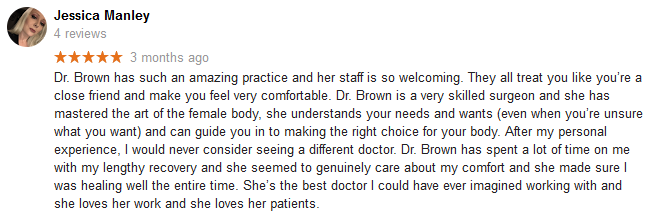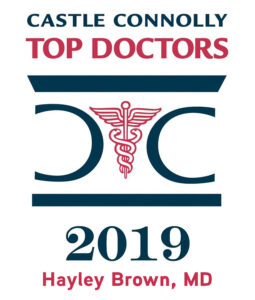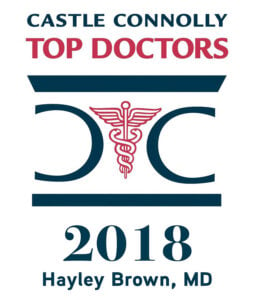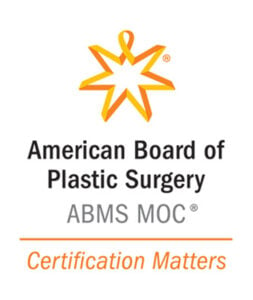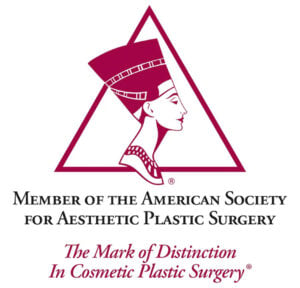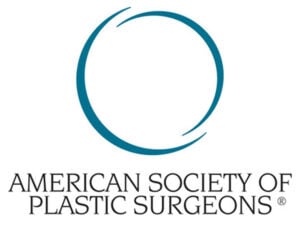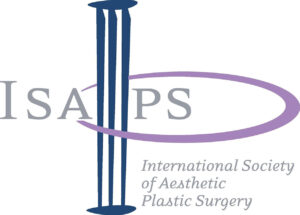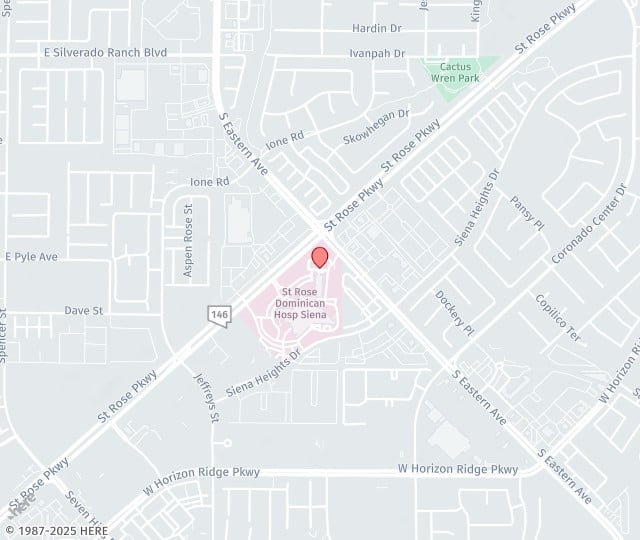Board Certified Female Plastic Surgeon Specializing in Facelift Surgery

Facelift surgery becomes a surgically necessary procedure in many individuals as they age if they have desires to project a youthful appearance, an inviting expression, and a well-rested, healthy and vibrant look. Non-invasive modalities such as injectable therapy, lasers and chemical peels, for example, only go so far in improving sagging tissues, facial definition, and loose and wrinkled skin. Ultimately, skin-tightening procedures are required to elevate sagging tissues, tighten muscles, and improve facial contours and skin appearance.
For more information about facelift procedures in the Henderson and Las Vegas area, please call Desert Hills Plastic Surgery Center at 702-260-7707 to schedule a consultation. Board-certified plastic surgeon Dr. Hayley Brown serves patients throughout the Las Vegas area.
Defining Facelift
The term "facelift" sometimes sounds unappealing, as most individuals are afraid of resulting stigma of facial cosmetic surgery where they have seen natural features look distorted, pulled, and mask-like. The goal of facelift surgery is not to change your appearance, but to create a natural-looking youthful appearance so that you look like yourself, only years younger.
Dr. Brown focuses on natural results. Unusual appearances, distortion or immobility of facial expression, visible scars, and an overdone, pulled-look is unacceptable. Maintenance of existing hairlines is also important so that patients are comfortable in short hairstyles and women feel at ease wearing their hair up or back. Dr. Brown feels that the best plastic surgery is when it looks like it hasn’t been done.
Facelift Techniques
There are several different techniques used in facelift surgery. Each approach to facial plastic surgery is individualized per patient, taking into consideration areas of concern and personal goals. An efficient, effective, and minimally invasive procedure is desired along with longevity of results. Procedures can involve part or all of the following: full face lift, neck lift, neck liposuction, mini-facelift, soft tissue fillers to restore lost volume, and skin resurfacing to smooth wrinkles.
These areas of the face may be considered during your evaluation and in determining your optimal procedure, so that the entire face looks harmonious and balanced:
Certainly, patient desires and personal surgical goals become foremost in formulating a treatment plan.
What Are The Different Types of Facelifts?
Although the purpose remains the same, there is more than just one facelift. Each one works differently to meet the needs of patients.
Here is a list of all the different types of facelifts you can have:
- Deep plane
- Mini facelift
- Mid-facelift
- Cheek lift
- Jawline rejuvenation
- S-lift
- Brow lift
- Liquid facelift
A deep plane facelift is meant to get rid of any unwanted sagging skin at the base of the neck and chin. A mini facelift uses small incisions to tighten your face while also removing excess tissue. A mid-facelift targets the middle portions of the face, namely the cheek areas, to tighten the skin and remove wrinkles.
Cheek lifts are a little different than a mid-facelift; both aim to improve the appearance of your cheeks. What separates them, however, is the way the procedure is performed. Rather than having small incisions made solely in the hairline instead of around the ears. Jawline rejuvenation is a procedure where a plastic surgeon removes fat cells from the neck and then reshapes the jawline for a smoother appearance.
An S-lift is when an S-shaped incision is made on the lower half of a patient’s face, which is specifically around the jawline and neck. Brow lifts are a rather quick procedure as it's meant to fix droopy eyebrows. Liquid facelifts are a popular and non-invasive variant as rather than a procedure, an injectable serum such as Botox or Juvederm is applied to one or more target areas of the face.
Who Is A Candidate For Facelift Surgery?
- A person who has experienced a loss of skin elasticity and muscle tone of the face and neck from aging, gravitational and environmental factors
- Patients of any age who have lost a significant amount of weight with resulting deflation and sagging of facial and neck tissue and skin.
- Someone with facial or neck wrinkles, or jowls, prominent facial folds
- A person with a tired facial appearance
- Individuals with full necks, ill-defined jawlines due to genetics, fatty deposits, sagging neck muscles
- Younger individuals may desire intervention sooner rather than later, to maintain their youthful look and put off more aggressive procedures.
- Common age ranges for facial rejuvenative surgery in our practice are 40-70 years old. Healthy individuals in older age ranges do very well with surgery and the recovery process
- Non-smokers. Patients who smoke or have a significant smoking history may be at risk for skin healing complications
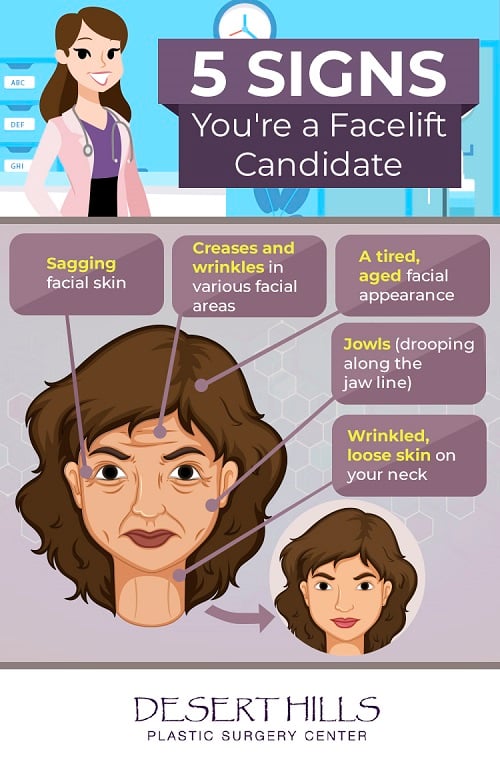
Goal Of Facelift Surgery:
- To provide the patient with a more youthful, healthy appearance that is also somewhat age-appropriate
- Improve skin tone and wrinkles
- Improve neck line, profile, jowls
- Reduce neck fullness, fatty deposits, tighten muscles of neck and face
- Restore youthful facial contours and proportions
- A natural "non-operated on" result
- Restore lost volume, reposition sagging tissues
Facelift Procedure Description:
- The operation is done on an outpatient basis, usually under general anesthesia.
- Incisions are hidden in and around the hairline and around natural ear contours, with a post-tragal incision desired. This means that the scar courses inside the ear along its middle third so that a vertical scar is not visualized in front of the ear.
- The skin is then separated from the fat, supportive structures, and muscle below. Fat may be trimmed or suctioned from around the neck and chin to improve the contour. The underlying muscles are then tightened, the skin is redraped in a vector opposite gravity, and the excess is removed. Stitches secure the layers of tissue and close the incisions
- Lost volume is restored to the face in areas that are deficient, typically the cheeks, temples, lower lid hollows, jawline and perioral areas. Fat or other soft tissue fillers can be used depending on patient preference and the area being augmented. Avoidance of over-correction and naturalness is key.
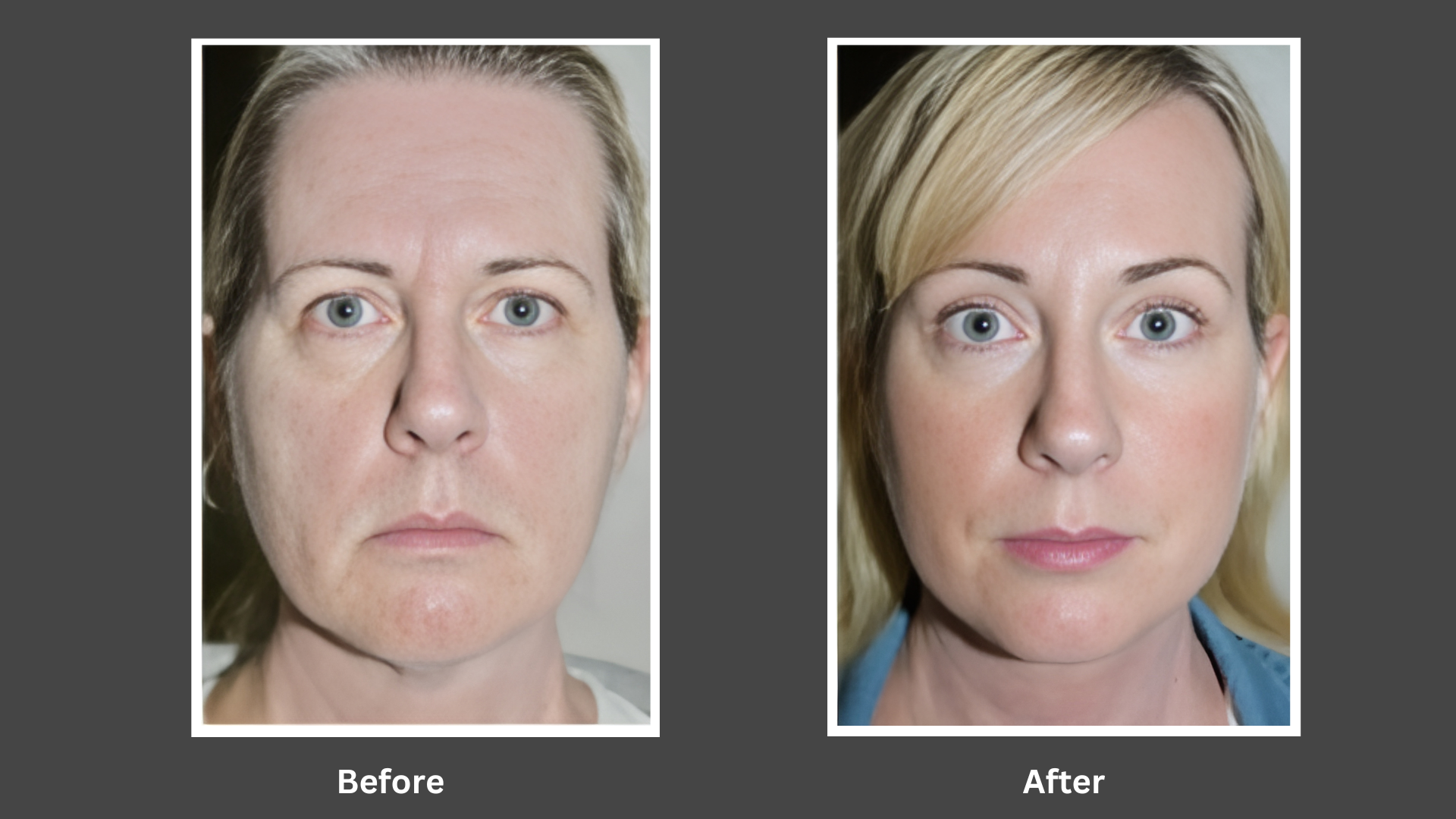
What Is The Recovery & Aftercare Like Following A Facelift Procedure?
Facelift patients are advised to expect a fair amount of swelling and bruising after their procedure. A compression wrap may be applied around the chin and head after surgery. Post-operative instructions will discuss how long compression is needed. From the onset of the recovery period, it is imperative that patients follow their post-op instructions. These will outline everything from medication use to when and how to shower and which activities to avoid and which to do. Walking is a necessary activity to help prevent blood clots in the legs after surgery. During the first week of recovery, it is beneficial to have electrolyte solutions like Gatorade, soups and soft foods available. Patients can expect to be tired a lot of the time. The majority of their energy is being used to heal, so rest and some extra hours of sleep are vital aspects during this first phase of recovery. In addition to sleeping with the head elevated, eyelid patients may be instructed to apply cold compresses or ice to the eyes to help reduce swelling and bruising.
At the two-week mark after facelift surgery, the majority of bruising and swelling may have subsided. Patients may return to work at this time, provided that their occupation does not require strenuous physical activity. Expect some swelling, tightness and resolving bruising to persist at this stage, so it may be apparent close up that you have had some work done. Makeup, long hair placed strategically in front of your ears, and high neck tops can help hide this. The more labor-intensive one's job, the more time off they may need to fully recover. As the swelling continues to subside and nerve endings are waking up, sensations like tingling may be noticed. Activity restrictions will remain in place for another few weeks, at least. Patients may begin resuming some of their usual activities sometime around four weeks post-op. At that time, most of the swelling and bruising should be gone. The skin may feel tight, but the visible results of the facelift won't necessarily reflect this. Patients can expect to look rested, rejuvenated, and beautifully natural by 6 weeks.
How Soon After The Procedure Will I See The Results Of My Facelift?
The facelift procedure involves the careful movement of the muscles and fatty tissue that contour the face and the removal of excess skin. The repositioning that is done incurs immediate results. That said, the outcome of a facelift is somewhat obscured by swelling and bruising. These common side effects typically subside quite a bit over several weeks following surgery. As they do, a more youthful appearance gets revealed. Because swelling can continue to diminish for several months, patients can expect to see their best facial aesthetic improve over time.
Can I Combine My Facelift With Other Procedures?
Yes. Many people who seek plastic surgery choose to combine procedures. Doing so maximizes the cosmetic outcome without significantly increasing recovery time. A facelift focuses on the lower part of the face. For more comprehensive rejuvenation, patients may choose to add a neck lift to their procedure. Other options include upper or lower blepharoplasty and a brow lift.
You can also combine a facelift with non-surgical interventions to enhance the final result. For example, you might opt for laser treatments or injectables after you have recovered from surgery.
After all, a facelift doesn't fade dark spots or restore lost volume. That's where complimentary treatments can help. Make sure to consult with our plastic surgeon about which services are best to combine with a facelift as everyone’s case is different.
Will The Results Of My Procedure Look Natural?
A natural-looking result is what good plastic surgery is all about! Our facelift procedures are planned with extreme care and respect for facial structure as a whole. The point of the facelift is to look like a younger version of oneself. We accomplish this objective with conservative repositioning of the deeper tissues beneath the skin without risks of distortion of surrounding structures. The addition of volume such as fillers is done conservatively and naturally so its not apparent and doesn't look overfilled or unnatural. In addition, skin closures are performed meticulously, lining up hairlines and hiding incisions inside the ear to minimize any visible scars.
How Long Will The Surgery Take?
Facelift surgery can take three or more hours. The duration of surgery is estimated based on the type of facelift the patient chooses and the inclusion of ancillary procedures such as eyelid rejuvenation or a neck lift. Surgery is performed using general anesthesia. Patients are in a sleep state during their procedure. Then, they are moved to a monitored recovery area where they will remain until the effects of their anesthesia have worn off enough to safely release them to a loved one.
What Is The Average Cost For A Facelift?
The cost of the procedure starts at $18,000. It depends on the technique used and various other factors. All will be discussed at the time of your consultation. Financing plans are an option for those who qualify, as well as payment by cash or credit card.
Full Facelift vs. Mini Facelift: Which Do You Need?
The choice between a full facelift and a mini facelift depends on the extent of aging you want to address.
A full facelift is ideal for those with significant sagging in the midface, jowls, and neck. It provides a comprehensive rejuvenation.
A mini facelift, on the other hand, targets mild to moderate sagging, primarily in the lower face and jawline. It offers a less invasive option with a quicker recovery.
Consult with Dr. Brown to determine the best approach for your specific goals.
What Are the Risks and Complications Associated With Facelift Surgery?
Facelift surgery comes with certain risks and potential complications, such as:
- Infection
- Bleeding
- Scarring
- Adverse reactions to anesthesia
Dr. Hayley Brown has decades of experience performing facelifts and other plastic surgery procedures. She uses precise techniques and provides robust aftercare instructions to offer great results and reduce the likelihood of complications.

How Do I Prepare for Facelift Surgery?
Proper preparation is essential for a successful facelift surgery and smooth recovery. Begin by following Dr. Brown's preoperative instructions, which may include:
- Stopping smoking
- Avoiding certain medications and supplements
- Asking someone to drive you home post-surgery
- Maintaining a healthy diet and staying hydrated
- Setting up a comfortable recovery area
What Medications Should I Avoid Before and After Surgery?
Certain medications and supplements can increase your risk of bleeding and interfere with healing. Common products to avoid include:
- Aspirin
- Nonsteroidal anti-inflammatory drugs (NSAIDs) like ibuprofen
- Herbal and vitamin supplements such as ginkgo biloba, garlic, and vitamin E
Dr. Brown will provide a comprehensive list of medications and supplements that you should not take before and after your procedure. Always inform her of all your medications and supplements to ensure safe surgical planning.
How Do I Manage Post-Surgery Pain and Discomfort?
Post-surgery pain and discomfort are normal parts of the recovery process. Dr. Brown will prescribe medication to help manage discomfort in the initial days following your facelift.
Some additional steps that can alleviate pain include:
- Applying cold compresses
- Elevating your head while resting and sleeping
- Avoiding strenuous activities

Can Men Undergo Facelift Surgery?
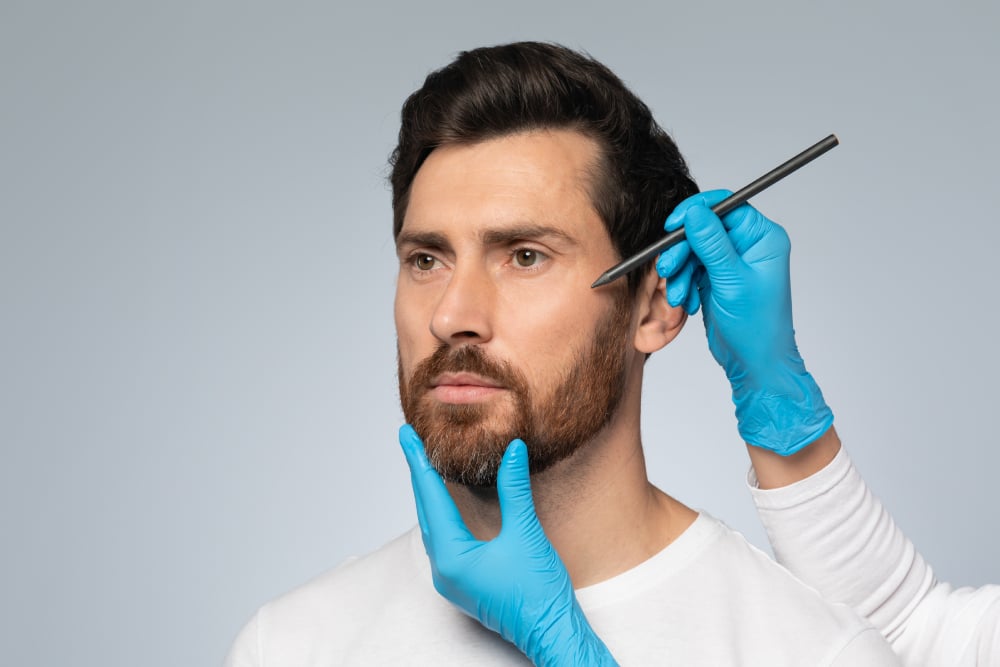
Yes, men can undergo facelift surgery. In 2023, almost 6,000 men underwent facelifts, a 6% increase from the previous year.
The principles and techniques of facelifts are similar for both men and women. However, there are some anatomical and aesthetic differences that surgeons like Dr. Brown consider.
For example, men often aim to maintain a natural, masculine appearance. They want to reduce sagging and tighten the jawline without creating an overly tight look.
Can a Facelift Address Deep Facial Folds?
A facelift effectively addresses both deep facial folds and surface wrinkles. However, its primary focus is on lifting and tightening deeper facial tissues. This results in the reduction of nasolabial folds (the lines running from the nose to the corners of the mouth) and marionette lines (the lines that run from the mouth to the chin).
A facelift significantly improves the appearance of deep folds. At the same time, surface wrinkles may need other treatments, such as injectable fillers. Desert Hills Plastic Surgery offers a range of complementary procedures to enhance the outcome of your treatment.
How Can I Reduce Scarring From a Facelift?
Minimizing scarring from a facelift involves several steps before and after surgery.
Before your procedure, choose an experienced surgeon like Dr. Brown, who uses advanced techniques and has a strong commitment to continuing education. Prioritize hydration as well. Drinking plenty of water can help with wound healing and overall skin health.
After your facelift, follow all care instructions, including:
- Keep incisions clean
- Avoid sun exposure
- Avoid smoking
- Using recommended scar creams and treatments
At Desert Hills Plastic Surgery, Dr. Brown provides comprehensive post-operative care to support optimal healing and reduce scarring. You can consult her at any time if you have questions or concerns about the recovery process.
Can Weight Fluctuations Affect Facelift Results?
Yes, significant weight fluctuations can impact the results of a facelift. Gaining or losing a lot of weight can alter the contours of your face. This may cause sagging or loosening of the skin that Dr. Brown tightened during the facelift.
For long-lasting results, do your best to maintain a stable weight by eating a healthy diet and exercising regularly.
How Will Smoking Affect My Facelift Surgery and Recovery?
Smoking can have a detrimental effect on both facelift surgery and recovery.
Nicotine constricts blood vessels and reduces the flow of blood to the skin. This can impair healing and increase the chances of poor wound healing, increased scarring, and other complications.
Smoking can also affect anesthesia and the surgical experience. It reduces lung function, which can complicate breathing during surgery. It also impairs blood circulation, which can hinder the effectiveness and metabolism of anesthetic drugs.
At Desert Hills Plastic Surgery, we advise patients to stop smoking before and after their procedure. This will ensure the best possible outcomes and reduce the risk of complications.
Why Choose Desert Hills Plastic Surgery Center?
When you choose Desert Hills Plastic Surgery Center, you opt for exceptional care under the expert guidance of Dr. Hayley Brown. She is a top-rated, board-certified plastic surgeon in Henderson, NV.
With a commitment to safety and excellence, Dr. Hayley Brown performs all procedures in fully accredited outpatient surgery centers. During these surgeries, anesthesia is administered by board-certified anesthesiologist Dr. Steve Brown (Dr. Hayley Brown’s husband, who has worked alongside her since 1996).
Dr. Brown is also known for administering comprehensive post-operative care. Patients' progress is closely monitored through regular office visits until they are fully healed and satisfied with their results. Additionally, Desert Hills offers long-term follow-up care. Dr. Brown and her team provide ongoing support for as long as patients desire.
Other Options:
- Brow lift
- Eyelid surgery
- Neck liposuction
- Skin resurfacing/Skin care
- Injectables & fillers
- Chin augmentation
Adjunctive facial surgical procedures done at the same time as your facelift should be considered, as the recovery process remains essentially the same as a facelift alone. Recovery is 2 weeks. Anticipate tightness, bruising and swelling with 2 weeks of social inactivity. Expect some relaxation after surgery with more natural contours apparent by 6-8 weeks.
How Long Do Facelift Results Last?
Because patients continue to age, experience gravitational effects, and have weight fluctuations, there is no such thing as permanent results. Many factors affect the longevity of the result. These include patient lifestyle, overall health, skin care regimen, philosophy of sun-exposure, inherent skin tone and elasticity, environment, diet, exercise, and maintenance regimen. Injectables such as BOTOX® Cosmetic and soft tissue fillers done a few times per year may enhance and maintain your results. Results can last 10 years or more, with individual variability depending on the influence of the factors mentioned.
At this point in time, there is no device or technique that safely and reliably tightens facial tissue more effectively than surgery. Patients should be wary of mass marketing and fancy advertisements, which sound too good to be true. Dr. Brown keeps informed and up-to-date on emerging technologies and techniques and incorporates new techniques only when they are proven safe and effective and FDA approved. Many topics advertised and seen in the media, as well as new procedures and techniques are regularly addressed and discussed in a truthful and non-biased manner on our Facebook site.
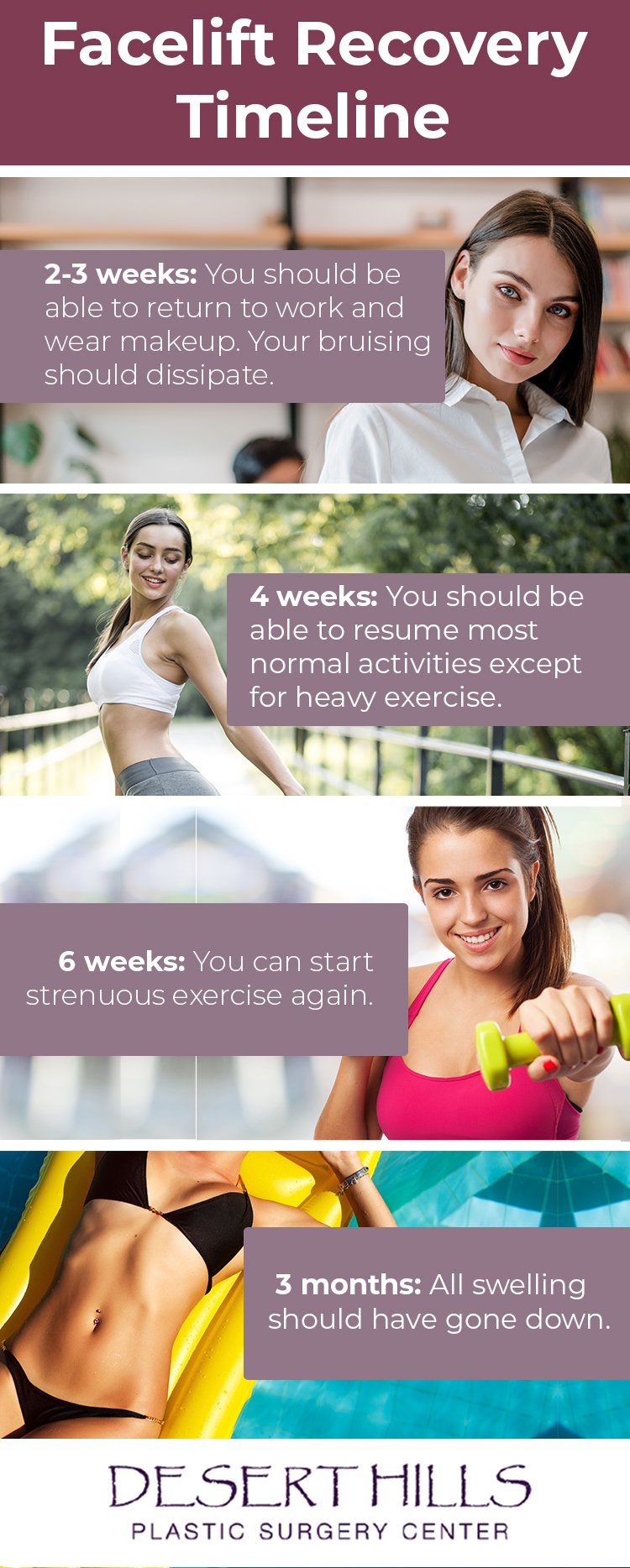
When Can I Resume My Normal Activities?
You can continue your typical routine after roughly four weeks after the procedure. But it is worth noting that this also depends on the type of facelift procedure you receive. As you recover, do not apply pressure to any of the incisions made, keep physical activity at a minimum, and do not lift any heavy objects.
Patients should not take any chances when it comes to their faces. Dr. Brown is a board certified plastic surgeon with the proper training and skills required to deliver a safe and predictable result. For more information about facelifts in the Las Vegas area, please call 702-260-7707 or contact Desert Hills Plastic Surgery Center online today.

